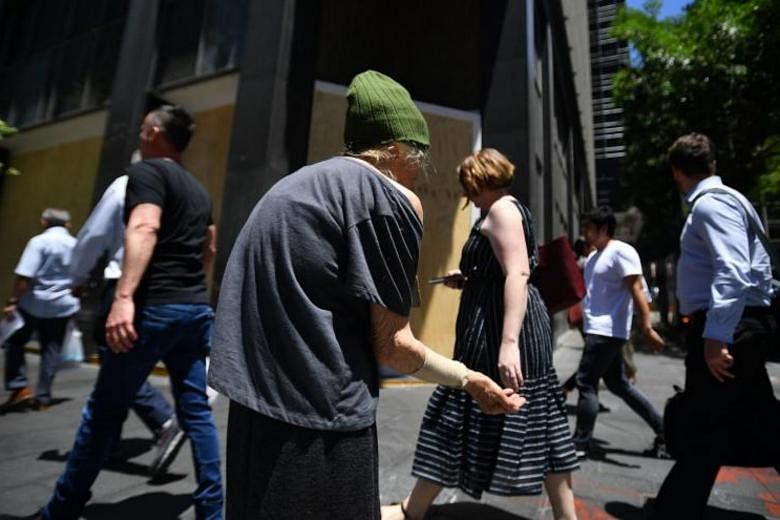CANBERRA (REUTERS) - Thursday's figures from the Australian Bureau of Statistics showed a lofty 61,600 net new jobs were added last month, compared with forecasts for an 18,000 rise and above an upwardly revised 7,800 gain in October.
To put things in perspective, a comparable increase in US payrolls would be 736,000. Australia's annual jobs growth rate at 3.2 per cent is more than twice the US pace of 1.4 per cent and the second fastest on record.
The strong set of numbers sent the Australian dollar higher by more than a quarter of a US cent to A$0.7673, a level not seen since early November.
The detail in Thursday's data was also upbeat with full-time jobs climbing 41,900, bringing gains since November 2016 to a blistering 304,600.
The unemployment rate stayed at 5.4 per cent as more people went looking for work, matching the lowest reading since February 2013. The participation rate hopped to 65.5 per cent, heights not seen since early 2011.
The data will be welcomed by the Reserve Bank of Australia (RBA) which is hoping the solid run in employment would ultimately lead to higher wages growth and inflation.
Yet, interest rate futures still imply an increase in the 1.5 per cent cash rate is months away, with a hike not fully priced in until early 2019.
"There is still some slack in the labour market and further jobs gains are required to lift wages," said Ryan Felsman, Sydney-based senior economist at CommSec.
While firms are scooping up workers, they are not so keen on paying them more, leaving wage growth near record lows and putting an unwelcome cap on consumer spending and inflation.
"The wages growth puzzle still needs to be resolved before the Reserve Bank moves interest rates," Felsman added.
"Therefore, official interest rates are unlikely to change until at least late next year."
The scrooge-like pace of wage rises is a major reason the Reserve Bank of Australia (RBA) last month forecast core inflation would not reach the floor of its 2 to 3 per cent target band until early 2019, a year later than previously hoped.
Wages growth is crawling at 2 per cent, only a sliver above inflation of 1.8 per cent. That is curtailing the spending power of Australian consumers who are already saddled with a mountain of debt.
Australia's biggest department store Myer Holdings on Thursday issued a profit warning just 10 days before Christmas, saying a slump in customer footfall would make first-half earnings "substantially lower" than a year ago.
Figures out last week showed Australia's economy accelerated at an annual 2.8 per cent pace in the third quarter, but household consumption, which accounts for 58 per cent of the country's gross domestic product, rose just 0.1 per cent.

